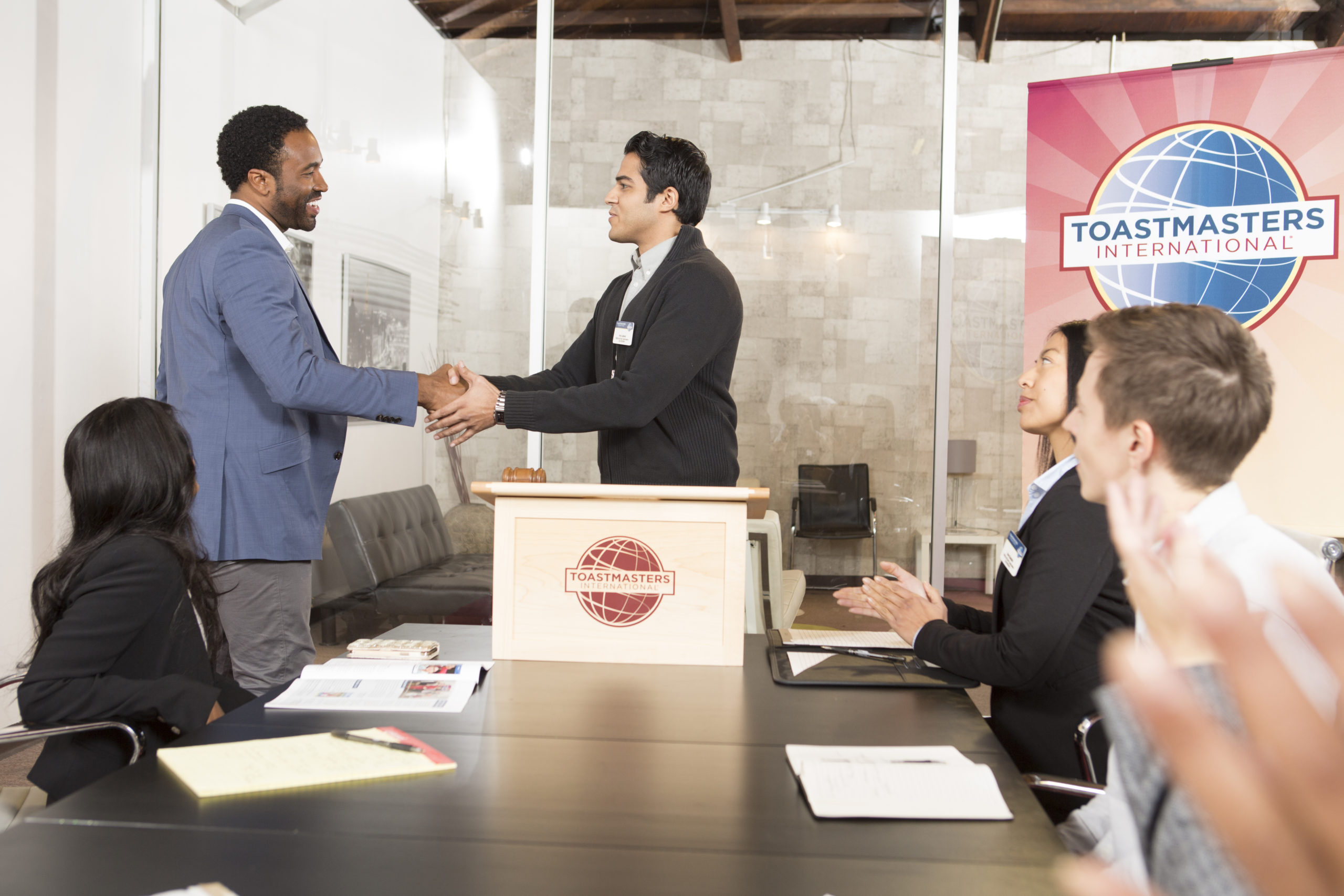Club Executive CHECKLIST
Being a club officer is an essential role as you learn while helping others to learn. It’s a wonderful opportunity to extend yourself as a leader. We have simplified the roles into checklists below but the best guide for all roles is the Club Leadership Handbook.
President
Provides leadership for all members
The President provides leadership for all members by setting an example of ‘best practice’ in terms of appearance, personal conduct, and following the guidelines as established by Toastmasters International.
Checklist:
- Complete the Club Success Plan to set goals for your term
- Encourage all club officers to attend Club Officer Training
- Organise Club Executive Meetings at least every few months
- Attend and vote at Area Council Meetings organised by the Area Director
- Attend and vote at District Council Meetings organised by the District Director
- Become a signatory on the club bank account
- Assist club officers with their roles when required
- Resolve team disputes


Vice President Education (VPE)
Organises meetings and assists members to achieve their educational goals
The VPE organises the agenda for each meeting and assists members to achieve their educational goals. Emails and agendas are often done online through Easyspeak or FreeToastHost.
Checklist:
- Records member achievements on the Toastmasters International website
- Progress members through Pathways as the Base Camp Manager
- Organise the club contests
- Organise a mentor for new members
- Attend Club Officer Training
- Attend and vote at Area Council Meetings organised by the Area Director
- Attend and vote at District Council Meetings organised by the District Director
Vice President Membership (VPM)
Encourages guests to become members and helps get members started with Toastmasters
The VPM is often the first contact for the club. They communicate with guests through the club website, and make them welcome at club meetings. Often, the VPM will allocate someone as a ‘buddy’ for the person when they come to the meeting. This means the guest will sit with an experienced member who will explain the club proceedings to them.
Checklist:
- Give membership packs to guests (containing a membership form, an explanation of Toastmasters, etc.)
- Ensure the membership form is up to date
- Induct new members
- Attend Club Officer Training
- Attend and vote at Area Council Meetings organised by the Area Director


Vice President Public Relations (VPPR)
Attracts guests to attend club meetings
The VPPR handles the website and social media of the club to attract guests to club meetings.
Checklist:
- Keep website and social media information up to date
- Greet guests at club meetings
- Find new ways to promote the club
- Send meeting report to members after each meeting
- Attend Club Officer Training
Secretary
Keep meeting minutes and club admin activities
The Secretary keeps minutes at Club Executive meetings. The secretary can also take minutes at club meetings. In this respect, the Secretary acts as the club historian, keeping track of changes such as rises in club fees etc.
Checklist:
- Keep minutes at committee meetings
- Update the Club Officer List on the Toastmasters International website
- Attend Club Officer Training


Treasurer
Handles finances of the club
The Treasurer is responsible for all financial matters at the club. They are a signatory to the club bank account, usually in conjunction with the President.
Checklist:
- Send reminders notices up to six weeks before fees are due
- Presents a financial report at the Club Executive Meetings
- Pays bills for the club
- Attends Club Officer Training
Sergeant at Arms (SAA)
Prepare the room for the club meeting
The SAA is responsible for making sure that the meeting room is ready and that everyone is welcomed.
Checklist:
- Prepare the room at the start of the meeting
- Open the meeting and goes through housekeeping (e.g. location of emergency exits and toilets)
- Maintain the club supplies (e.g. coffee, tea, cups)
- Pack up the room at the end of the meeting

